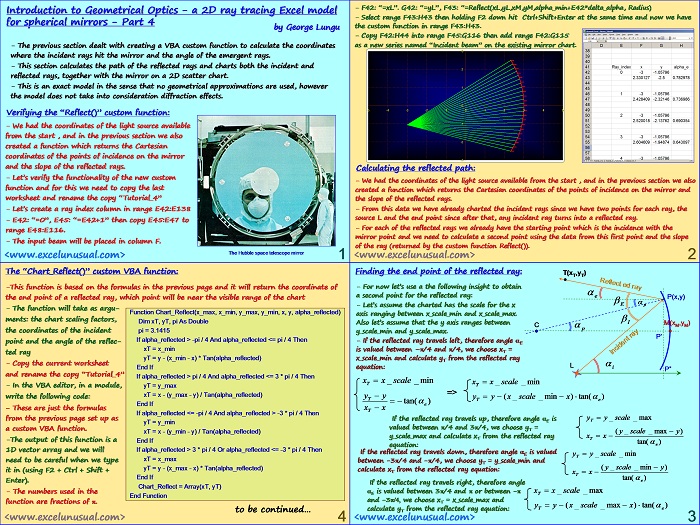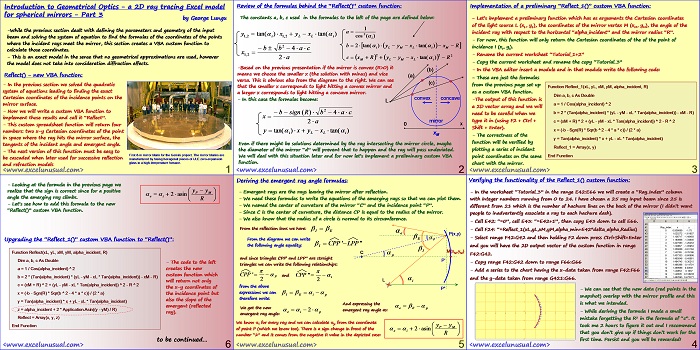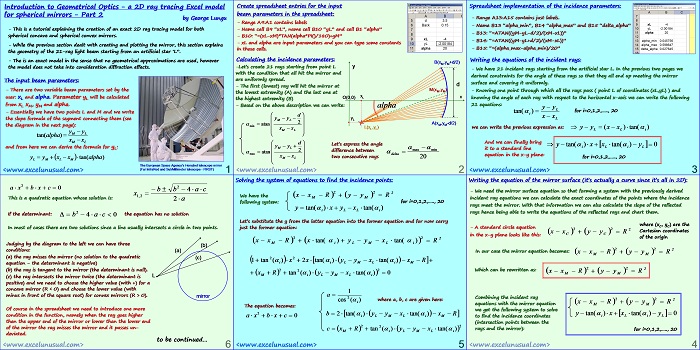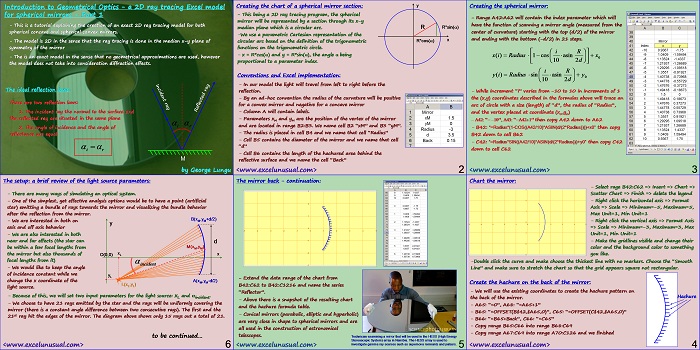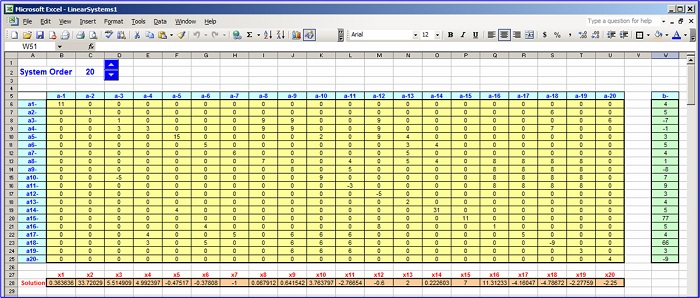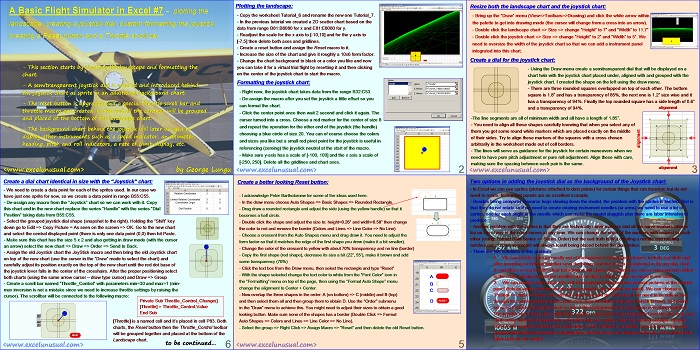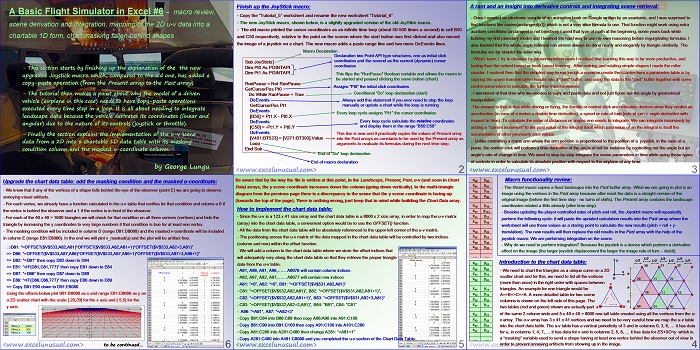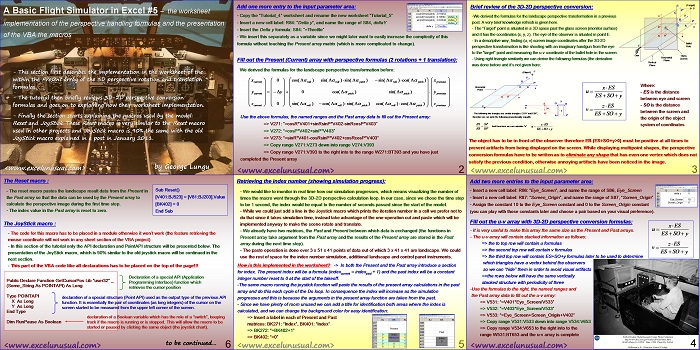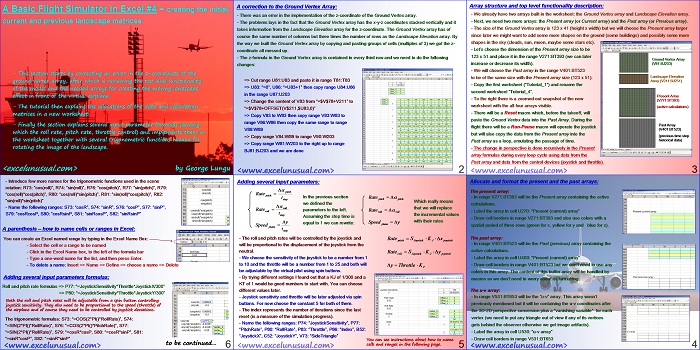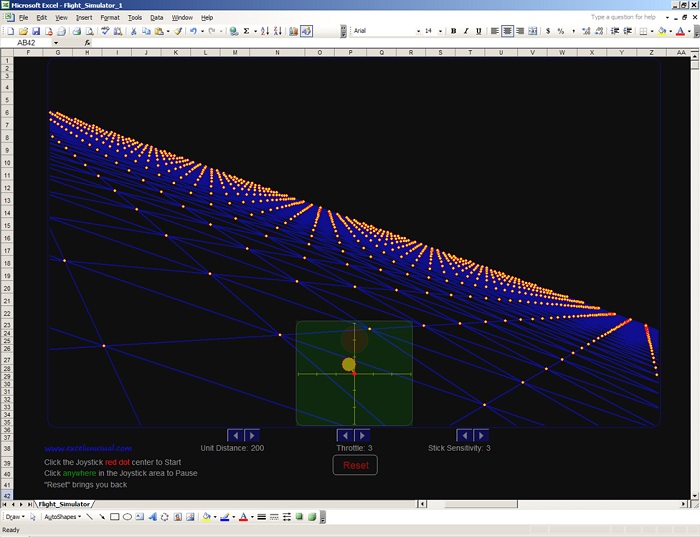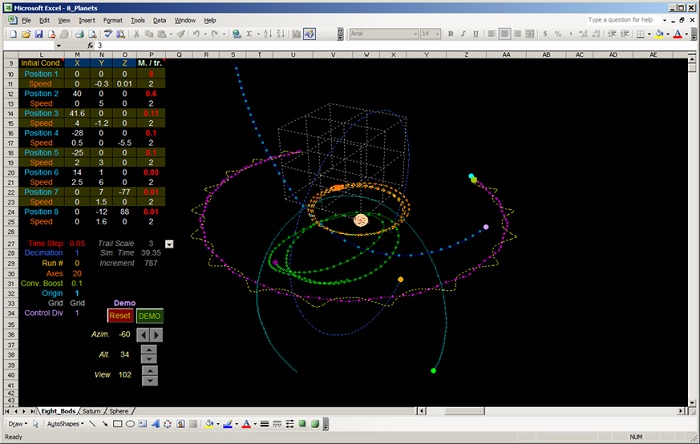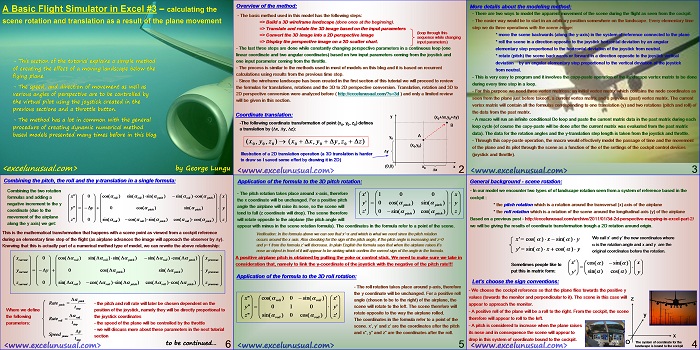This is a demonstrative model for 2D spherical mirror ray tracing in Excel. It works in Excel 2003 at about 40 frames per second and in Excel 2007 at about 4 frames per second. You can start it in a hands-off demo mode by clicking the “Fully Automatic Demo” button and at any time you can hit the the “Demo… Read More... "A Preliminary 2D Ray Tracing Demo for Spherical Mirrors in Excel"

